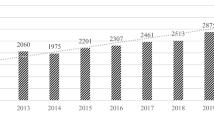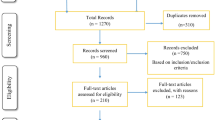Abstract
In the real estate market, boom and decline patterns that influence the development of a country’s economy are often considered. However, there exists limited information on which factors cause the real estate expansion and declines to occur. Therefore, this research explored the factors that cause real estate booms and declines using data from the period 2008 to 2018. The study adopted secondary research using various literature on the real estate boom and decline outlooks for developing countries. Content analysis and fact-finding were used to analyse the secondary data collected to identify the factors that caused the real estate market booms and declines to occur. For in-depth analysis, this study chose to focus on a sample size of four developing countries that display common factors that influence real estate market phases. The results showed that the factors that influenced real estate boom and decline outcomes for the selected developing countries during the period of investigation can be categorised into macro- and micro-economic factors. These included interest rates, tax incentives and policies, economic cycles, population growth, supply and demand levels, number of buyers and sellers, and vacancy levels. The research provides information that could signal the state and direction of the real estate market at a particular time or period, which is relevant to various real estate market participants, including planners, developers, and investors. Further empirical studies are required for greater attention on how the real estate market factors could affect the development of a country.

Similar content being viewed by others
References
Barkham, R. (2012). Real estate and globalistion (1st ed.). Wiley-Blackwell.
Bengtsson, M. (2016). How to plan and perform a qualitative study using content analysis. Nursing plus Open, 2, 8–14.
Collins, T. & Ghyoot, V. (2015). Commercial property finance, development and investment (1st ed.). University of South Africa.
Crowe, C., Dell’Ariccia, G., Igan, D., & Rabanal, P. (2013). How to deal with real estate booms: Lessons from country experiences. Journal of Financial Stability, 9(3), 300–319.
Eisenhardt, K. M. (1989). Building theories from case study research. The Academy of Management Review, 14(4), 532–550.
Geipele, I., & Kauskale, L. (2013). The influence of real estate market cycle on the development in Latvia. Procedia Engineering, 57(13), 327–333.
Geipele, I., & Kauskale, L. (2016). Integrated approach of real estate market anaylsis in sustainable development for decision making. Procedia Engineering, 172, 505–512.
George, T. (2022). Exploratory research: Definition, guide, & examples. Retrieved May 6, 2022, from https://www.scribbr.com/methodology/exploratory-research/.
Glaeser, E., Huang, W., Ma, Y., & Shleifer, A. (2017). A real estate boom with Chinese characteristics. Journal of Economic Perspectives, 31(1), 93–116.
Glen, S. (2020). Purposive sampling (deliberate sampling). StatisticsHowTo. [Online]. Retrieved July 18, 2020, from https://www.statisticshowto.com/purposive-sampling/.
Graaskamp, J. A. (2018). Fundamentals of real estate development. In Development component series. Retrieved March 5, 2020, from http://morris.marginalq.com/GREM_RE720_MoreFiles/Urban%20Econ%20Graaskamp%20ULI.PDF.
Gray, D. E. (2014). Designing case studies. Ch 11. In Doing research in the real world (3rd ed.). Sage.
Johnston, M. P. (2014). Secondary data analysis: A Method of which the time has come. Qualitative and Quantitative Methods in Libraries (QQML), 3, 619–626.
Jones, C. I. (2016). Chapter 1—The facts of economic growth. Handbook of Macroeconomics, 2(16): 3–69.
Kabir, S. (2017). Methods of data collection. Research Gate. 201–275. [Online]. Retrieved July 20, 2020, from https://www.researchgate.net/publication/325846997_METHODS_OF_DATA_COLLECTION.
Kong, Y., Glascock, J. L., & Lu-Andrews, R. (2016). An investigation into real estate investment and economic growth in China: A dynamic panel data approach. Sustainability, 8(6), 1–15.
Lelissa, T. B. (2018). Research design and methodology. Ch 5. Doctoral Thesis, University of South Africa.
Miao, Y. (2019). Literature review of the research on real estate financial risk. Open Journal of Business and Management, 7, 876–891.
Mouzughi, Y., Bryde, D., & Al-Shaer, M. (2014). The role of real estate in sustainable development in developing countries: The case of the Kingdom of Bahrain. Sustainability, 6(4), 1709–1728.
Oxford Business Group. (2020). Bahrain's retail and housing segments grow as the real estate sector begins to bounce back. Retrieved August 25, 2020, from https://oxfordbusinessgroup.com/overview/bahrains-retail-and-housing-segments-grow-real-estate-sector-begins-bounce-back.
Price, P. C., Jhangiani, R., Chiang, I. A., Leighton, C. D. & Cuttler, C. (2012). Research methods in psychology. Reliability and Validity of Measurement. Retrieved July 15, 2020, from https://opentext.wsu.edu/carriecuttler/chapter/reliability-and-validity-of-measurement/.
Purvey, M. (2017). Part 1 of 3: How has the real estate industry changed over the past 10 years? Retrieved March 3, 2020, from http://www.rezora.com/blog/part-1-of-3-how-has-the-real-estate-industry-has-changed-over-the-past-10-years.
Real Estate Web. (2020). South African property market corrections—Not as painful as the USA property market. [Online]. Retrieved August 3, 2020, from https://www.portfolio-property.com/article/view/id/318.
Reddy, K. S., & Agrawal, R. (2012). Designing case studies from secondary sources—A conceptual framework. International Management Review, 8(2), 63–70.
Schnabl, G., & Hoffmann, A. (2008). Monetary policy, vagabonding liquidity and bursting bubbles in new and emerging markets: An overinvestment view. The World Economy, 31(9), 1226–1252.
Shi, Y. (2017). Real estate booms and endongenous productivity growth. [Online]. Available: https://economics.mit.edu/files/12312. (Accessed 28 February 2020).
Snyder, H. (2019). Literature review as a research methodology: An overview and guidelines. Journal of Business Research, 104, 333–339.
The Appraisal of Real Estate. (2013). 14th Edition. 2013.
Wang, L., Li, S., Wang, J., & Meng, Y. (2019). Real estate bubbles in a bank-real estate loan network model integrating economic cycle and macro-prudential stress testing. Physica a: Statistical Mechanics and Its Applications, 542(122576), 1–16.
World Bank Organisation. (2020a). Population, total—China. World Bank Organisation. Retrieved August 21, 2020a, from https://data.worldbank.org/indicator/SP.POP.TOTL.
World Bank Organisation. (2020b). Population, total—Latvia. World Bank Organisation. Retrieved August 21, 2020b, from https://data.worldbank.org/indicator/SP.POP.TOTL.
World Bank Organisation. (2020c). Population, total—South Africa. World Bank Organisation. Retrieved August 21, 2020c, from https://data.worldbank.org/indicator/SP.POP.TOTL.
Xu, T. (2017). The relationship between interest rates, income, GDP growth and house prices. Research in Economics and Management, 2(1), 30–37.
Yin, R. K. (2012). Applications of case study research (3rd ed.). Sage.
Zikmund, W. G., Babin, B. J., Carr, J. C., Griffin, M. (2009). Business research methods. South-Western College Pub.
Funding
No funding was received for conducting this study.
Author information
Authors and Affiliations
Corresponding author
Ethics declarations
Conflict of interest
The authors have no conflict of interest to declare for this work.
Additional information
Publisher's Note
Springer Nature remains neutral with regard to jurisdictional claims in published maps and institutional affiliations.
Rights and permissions
About this article
Cite this article
Phatudi, L., Okoro, C. An exploration of macro-economic determinants of real estate booms and declines in developing countries. J Hous and the Built Environ 38, 261–282 (2023). https://doi.org/10.1007/s10901-022-09957-x
Received:
Accepted:
Published:
Issue Date:
DOI: https://doi.org/10.1007/s10901-022-09957-x




